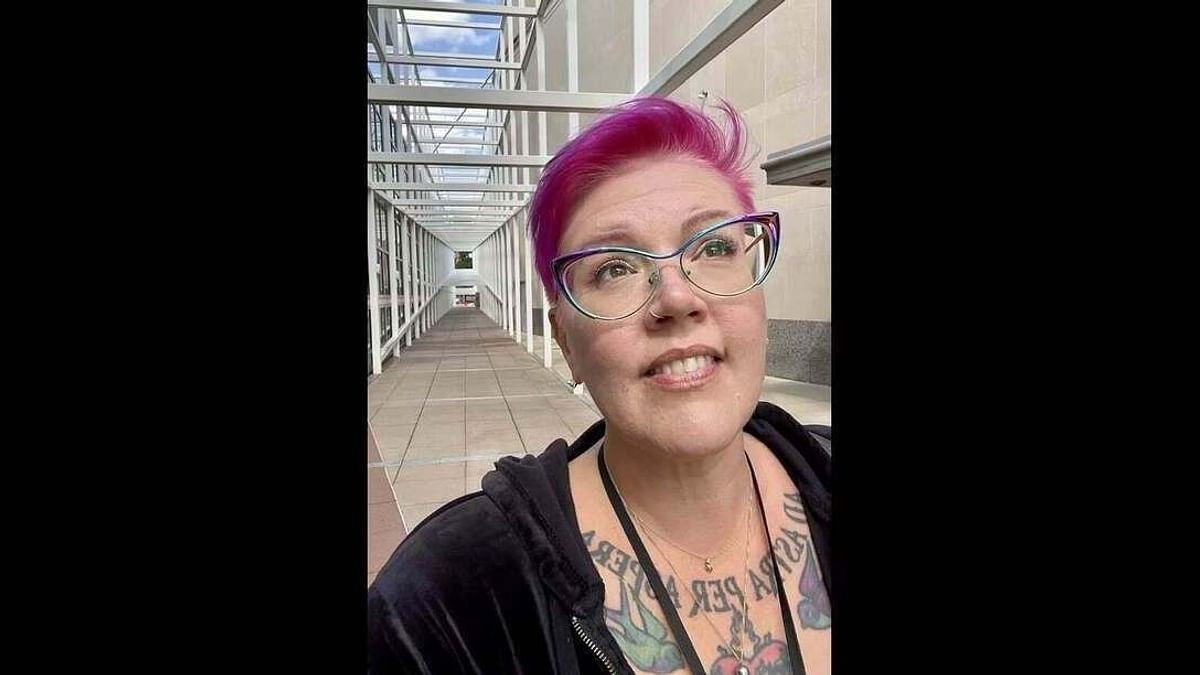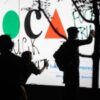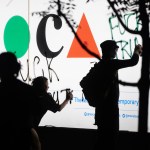
Elise Dew, who first met Marshall while working with her at the Wex in 2005, said that Marshall’s passion for accessibility work sparked from growing up with parents who had physical disabilities – concepts later reinforced when Marshall served as an aide for a family with an autistic child.
“She would see all of these situations in public where access was a little more difficult, like, how can you make going to the zoo something that’s safe and fun and accessible for the family?” Dew said. “And I think that helped her get more of that intimate knowledge early on. … You can gain education through reading and learning, but growing up around people who have disabilities, I think that sort of shades your whole world, because you see how having those points of access can affect so many different situations.”
Cavanaugh said that prior to Marshall moving into her role as accessibility manager at the Wex, issues related to accessibility tended to come up late in the planning process, almost as an afterthought. In recent years, however, the concept has been introduced in the earliest discussions, becoming increasingly ingrained within the DNA of the museum.
“When she got this new role, it allowed us to put more resources behind it, and more of a spotlight on it,” said Cavanaugh, who believes the Wex will eventually fill the accessibility manager position, stressing current leadership believes strongly in the importance of the work. “We started doing more training for staff, and Helyn would take it upon herself to work with people and make sure they understood the best practices and the regulations. There were really two things: There’s what we have to do and what we should do. … How can we be the most inclusive, the most accessible, so that people of all types and abilities can find themselves here and feel like it was a place where they were being welcomed?”
Cavanaugh recalled the run-up to an August 2020 exhibition by LaToya Ruby Frazier, which featured a number of photographs taken by the visual artist of workers at a General Motors plant in Lordstown, Ohio, along with accompanying text that helped to put the images into greater context. Cavanaugh said the images and text were all hung at standing height, and the sheer volume of material meant that anyone attempting to take in the entirety of the exhibit could be on their feet for hours, which for some can be an impossibility.
“And as we were planning the exhibition, [Marshall] was like, ‘You know, we should really have something in a bigger typeface, so that people can sit and read,’” Cavanaugh said. “And it was addressing two things: people who needed a bigger type size, but also people who couldn’t physically stand there that long.”
Frazier was so struck with the results that when the exhibit closed at the Wex and moved to another museum, she requested the enlarged text travel with it.
Marshall’s accessibility work took many forms. Working in partnership with Ohio State’s Office of Digital Technology and Innovation, she helped design tactile 3D images for “Meditation Ocean,” which allowed vision-impaired visitors to engage with the exhibit. She also initiated and collaborated on a style guide for alt text – image descriptions encoded into digital images and spoken aloud by screen readers to describe what is depicted in a photograph. The style guide was later picked up by the Kennedy Center and included in the Access/VSA International Network Curated Content Library – an international network that shares the best practices related to cultural access.
Both Cavanaugh and Dew said Marshall approached accessibility work with an understanding that she didn’t have all of the answers, though she worked diligently to seek them out. As part of this, Marshall helped put together a community advisory panel alongside Sammons. The panel featured five individuals with a range of disabilities, plus Marshall, who then toured the museum as a group and discussed potential hurdles to access.
“We really had a dialogue going the whole way through [the Wex],” Sammons said. “The group included someone in a wheelchair, someone with intellectual disabilities, a person with psychological difficulties, a signing, deaf participant and then myself and Helyn, and we all joined together.”
“We had between us six people: six perspectives, six different experiences,” Marshall said in a July interview posted on the Wex blog. “People have different disabilities that need accommodation in different environments, which is something I think a lot of people don’t consider when they’re conceiving of disability as a state of being.”
Following the tour, the group produced a 14-page report designed to help the Wex increase access for all of its guests.
“Helyn didn’t do this work because she had this idea, like, ‘Oh, people should be able to experience art,’” Dew said. “She was like, ‘This is a right for all people. … If we’re really trying to fulfill our mission, we should all be thinking about how people can all experience this.’”
Guided by the advisory panel, Marshall helped the Wex obtain new digital tools, including equipment to provide closed captioning on Digital Cinema Package (DCP) films and an LCD writing board available at the front desk to anyone with a communication-based disability. In recent months, Marshall also helped secure more than $250,000 in grants to expand the Wex’s digital and physical accessibility.
In addition to these high-dollar initiatives, Marshall also purchased comparatively low-tech items, including pocket-sized fidget spinners and squishy animal figures that could be utilized by people experiencing anxiety. Sammons said Marshall even outfitted her office at the Wex as a calming room, complete with soft lighting, fuzzy carpet, gently aromatic candles and a pillowy couch. “It was almost like a holy place where you could just go and be rejuvenated,” she said.
The accessibility work done by Marshall will continue to impact visitors to the museum in myriad ways moving forward, both in terms of practices she helped put in place and grants she obtained that will help new initiatives take root. Even beyond that, there’s the lasting influence Marshall had on co-workers, several of whom stressed the importance of carrying on in her mission to help better open the Wex to the entire Columbus community.
“I don’t want to say she snapped her fingers and changed us all overnight, because there’s still a lot of work to do here – and she knew that,” Cavanaugh said. “But I do think people heard her, and they understood why she was pushing us. And it’s because she wanted this place to be amazing, and she wants us to be a model for how institutions can approach accessibility.”
To that end, Cavanaugh said in recent days she’d repeatedly circled back to an idea first proposed by Marshall, which would be costly and difficult but would also greatly improve access to the Wex.
“We don’t have a designated drop-off zone for people with mobility issues, and if you do have some kind of mobility problem, the parking garage is far away,” she said. “It would be such a big infrastructure project to cut out part of the sidewalk and everything, but I know it was something Helyn felt strongly about, so it’s like, how can I get this done? I know it will take a lot of resources, but I’m not going to stop talking about it, I’m not going to let it go. … And we could call it the Helyn Marshall Memorial Drop-Off.”
This post was originally published on this site be sure to check out more of their content.







